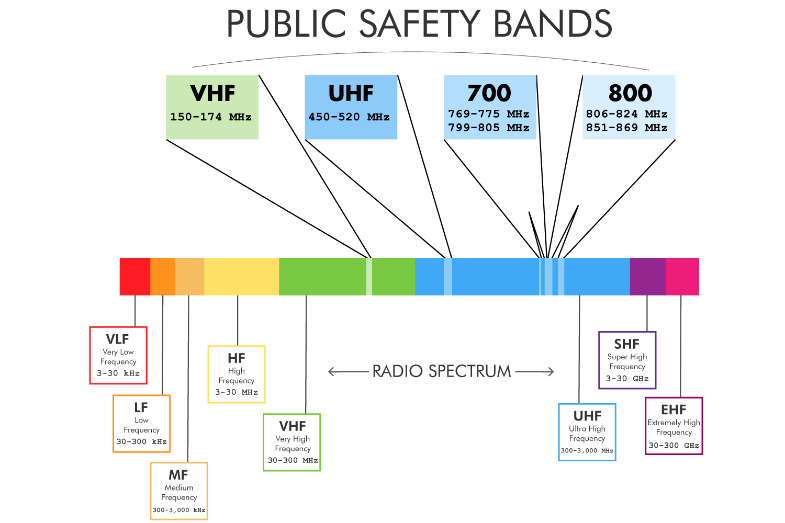Intro to Two-Way Radio
BDA Fundamentals
Codes & Regulations
Sales
Product Information
Design Process
Installation and Deployment
Service & Maintenance
Frequency Bands and Channels
You are here: Main > Intro to Two-Way Radio > Frequency Bands and Channels
Each BDA is built to amplify frequency bands within a specific range, depending on the need for coverage.
Communication happens on specific radio frequency channels within specific frequency bands.

VHF Band (150-174 MHz)
-
Typically used by older radio systems, systems that require coverage in wide geographical areas, and systems that require interoperability with marine frequencies.
-
Approximately 15% of public safety agencies use this frequency band.
-
VHF is great for outdoor coverage but has very poor in-building performance.
-
Used almost exclusively by conventional systems (no trunking).
UHF Band (450-520 MHz)
-
This is a very common band for public safety.
-
Approximately 35% of jurisdictions use this band.
-
Best Radio Signal Propagation — good performance both outdoors and inside buildings.
-
Mostly used for conventional repeater systems.
700 Band (763-775, 793-805 MHz)
-
Most recent addition to public safety frequency pool.
-
DL 763-769MHz / UL 793-799MHz is used for Data and DL 769-775MHz / UL 799-805MHz is used for Narrowband Voice.
-
LTE Band 14 (DL 758MHz – 763MHz and UL 788MHz – 793MHz) is Assigned to FirstNet for LTE.
-
Approximately 10% of jurisdictions currently use this band for voice communications, however, it is expected that FirstNet use will be adopted across the US.
-
Public safety agencies will use 700 MHz and FirstNet LTE in addition to the bands that they are currently using for voice communications.
800 Band (806-815, 851-860 MHz)
-
800MHz is most commonly used for public safety systems with approximately 40% of jurisdictions using this band.
-
These are newer systems, mostly trunking.
-
This frequency band has good indoor coverage but not as good as UHF and VHF for outdoor range — these systems are either simulcast or multi-site trunking.